Eureka Midori 6 Handleiding
Bekijk gratis de handleiding van Eureka Midori 6 (2 pagina’s), behorend tot de categorie Tent. Deze gids werd als nuttig beoordeeld door 50 mensen en kreeg gemiddeld 5.0 sterren uit 25.5 reviews. Heb je een vraag over Eureka Midori 6 of wil je andere gebruikers van dit product iets vragen? Stel een vraag
Pagina 1/2

ASSEMBLY INSTRUCTIONS
MIDORI 4 and 6 TEN :TS
Reach under the fly at
the sides and rear.
Attach the dog bone
web to the pullout ring.
What's in the box:
1 Tent Body, 2 Tent Poles, 1 Tent Fly, 1 Fly Strut
1 Carry Bag, 1 Pole Bag, 1 Stake Bag/ Stakes
Lay out the tent body.
Assemble the poles and attach to the webs diagonally
across the tent body.
Clip the tent body to the poles.
Stake down the loops at
the corners. Work on the
diagonal to square the
tent as you go.
Raise the poles. Attach to the tent
where they cross.
Drape the fly over the tent so
that the yellow webs meet.
Reach under the fly and wrap the
Velcro tabs around the poles.
Attach the web
buckles from the
fly to the tent.
Pull open each fly vent
and raise the stays.
Pull out the vestibule
triangle. Push up/back the
strut. Stake the webs, then
the guyline. Should look
like this inside when done.
JOHNSON OUTDOORS GEAR 9.15
Stake out the fly.

Good:
4 stakes /4 lines Best:
4 stakes /8 lines
REV F. SEPT15
SEAM SEALING:
We recommend use of a sealer such as Kenyon Seam Sealer 3 or McNett Outdoor
SeamGrip
®
.
• Work in a fully ventilated area.
• Set the tent up or lay the tent out Taut seams allow for even application and flat.
penetration of the sealer.
• Decide which seams need to be sealed. For example, seams that will be exposed
to rain, runoff, or ground level water are a must for sealing, while seams on
uncoated nylon or mesh panels don’t need treatment. There is no need to seal
the seams in the roof or the factory taped seams. We recommend sealing both
floor and fly seams and reinforcements.
• Apply sealant to the inside and outside of all exposed seams. Several thin layers
will work better than one thick layer. Read and follow manufacture's instructions.
STAKING:
All tents need to be staked down to keep them from blowing away. Securing the
tent by placing heavy objects inside is just not adequate.
• Once the tent body is erected, stake it out before the fly is put on. This enables you
to square the tent up to ensure that the goes on properly and that the seams fly
align with the frame. Pull the base of the tent taut between each web stake out
loop or ring & pin. Make sure that all corners are square. It is important that you
don’t stake the tent out too tightly. You will know it’s too tight, if the door zippers
can not be easily operated. Drive stakes through the web loops, or with ring & pin,
drive the stake just outside the ring so that the “J” hook catches it. Tie a piece of
cord or web into a loop through the ring to be used as a large stake loop if
needed.
• h e t y , dr e e y r e fr , h s t Wit th ten properl staked ap th flove th ame attac it ten
connection points and stake down any pull outs.
• Do not attempt to remove the stakes by pulling on the tent stake-out loop, as this
could cause the fabric to tear. The best way is to pry on the stake itself.
Staking in special conditions:
• Sand. Use long, broad stakes with plenty of surface area in loose soil.
• rd, R , or F n .Ha ocky roze Soil l s kes w k best. e s l s kes Stee ta or Stor tee ta
separately. Their sharp edges can cut fabric and leave rust stains, which might
damage your tent.
• Snow. Use “dead man” anchors. Tie tent to buried objects (branches, tent bags, or
stuff sacks with snow; or tie tents to snow shoes, skis, or ski poles, which are filled
stuck in the snow.
GUY LINES:
Do not depend upon staking alone to keep your tent secure during high winds. Most
tent models have built-in loops or rings at optimal guy out locations. It’s important
to put in the extra time guying out your tent. Correctly done, it can save your tent
during exceptional weather.
• Make sure that the top is securely attached to the tent frame. Ties, hook and fly
loop, or dog-bones and elastic loops are sewn to the underside of the for this fly
purpose.
• Attach parachute cord to the loops/rings and stake them in the ground three or
four feet from the edge of the tent. If staked too close to the tent, wind can cause
an upward pull that could dislodge the stakes.
• If your tent does not have loops or rings for guy outs, attach guy lines 1/3 to
1/2 of the way up the framework on the main sidewalls. This enables the
guy line to support the lower section of the pole, while the upper pole can
flex deflect and wind gusts. It is best to run two cords at an angle from the
side of the guy out. This prevents all movement, except toward the anchor.
The guy lines will work together through opposition. See illust rations below:
CONDENSAT N & VENTING:IO
Through perspiration and breathing, an adult gives off about a pint of water
overnight. If it cannot escape, the water vapor condenses to liquid. Most
often, water found in the tent is a result of this condensation rather than
from the tent leaking. Condensation often forms where the sleeping bag
touches the side of the tent, under the sleeping pad, or on coated surfaces
such as the door A tent’s double wall construction allows the vapor to flaps.
escape through the roof to the outside, keeping the inside of the tent dry.
Leave the windows partially open at night to provide cross ventilation and
further reduce condensation. Cross ventilation becomes more important in
very humid or extremely cold conditions when the permeable roof is less
effective. The features that enhance ventilation are windows, short-sheeted
flys (bottom venting), roof vents, and High/Low venting doors. These are
specific to each tent model.
Given the importance of proper ventilation, We use High/Low venting in most
of our tents. This allows cooler air in through the low vents and warmer,
mo ou hrou th hi gh/ist air up and t t gh e gh nts. ve Hi Low v t g is en in
accomplished within the inner tent via roof vents, doors and windows. It is
important to vent the vestibule. Unvented, it can inhibit ow into the tent. airfl
Our tent vestibules from the ability to “short sheet” by means of profit
zippers & toggles and staked vestibule pull outs create a bellowing effect.
Most of our tents are equipped with a High/Low venting door. This design
all ea ai te ttows incr sed r ow into the flnt f m the ro bo om. Open the low
vent/window to admit cool air, allowing the warmer air out through the
high roof vents. When rain and wind prevent the low vent from being
opened, the high door vent can still be used. Fly overhangs or vestibules
protect it.
ULTRAVIOLET LIGHT:
Ultraviolet light damage to tent fabric is caused by excessive exposure to
sunlig . le our rics are UV r i a , any tic fab c is ht Whi fab es st nt synthe ri
susceptible to UV degradation. UV damage will cause nylon and polyester
to become brittle and tear easily. We recommend that you use the rain fly
even on clear days. It acts as a sunscreen to the tent. A rain is both easier fly
and less expensive to replace if damaged. UV damage can be minimized by
erecting tents on shaded sites with low exposure to direct sunlight.
GENERAL POLE CARE:
• Never let tent poles snap together as this can damage the pole end.
• Do not drop tent or pole bags on their ends and do not bounce a tent bag
on its end to get the tent out. These actions may cut the shock cord and
damage the pole ends.
• The aluminum frame may bend slightly and take a “set” through usage; this
normally does not affect the performance of the frame.
GENERAL TENT CARE:
• Sweep the tent floor daily to prevent damage from stones.
• Try not to wear shoes inside your tent.
• Use a ground cloth whenever possible.
• Do not keep food inside a tent. Hungry critters will chew through tent fabric in
search of food.
STORAGE:
• Make sure the tent is completely dry, then store loosely rolled, in a dry, cool
place. To prevent dust from collecting on the tent, cover it with a cloth. This
allows the nylon/polyester fabric to breathe.
• Ideally, the tent poles should be stored in their fully assembled state. This
reduces the tension on the shock cord, prolonging its life.
• The tent bag should be used only as a carry sack and not for storage.
COLOR TRAN ER:SF
• Do to the nature of tent fabrics, color can transfer from darker to lighter
fabrics when the two fabrics are in contact over time when wet, damp or
exposed to the combination of moisture and high heat. This does not effect
the tent's performance. To prevent / minimize color transfer, always make
sure your tent is completely dry prior to packing and storage.
CLEA NG:NI
• Clean the tent by setting it up and wiping it down with a mild soap (liquid
han soap an luk wa olu ion Rins tho ghld ) d ewarm ter s t . e rou y and dry
completely. Never use detergent, washing machines or dryers because they
can damage the tent’s protective coating and seams. After cleaning, be sure
the tent is completely dry, especially the heavier, double-stitched areas such
as the seams, before storing or mold / mildew are likely to grow.
• Clean the tent poles with a cloth and lubricate them with silicone spray. This is
especially necessary after ocean side camping to remove salt spray so the
poles don’t corrode or stay gritty.
• Clean the zippers with a quick dip in water and then dry them off. This is
especially important if you’ve been camping in a location with sand/dirt. If
you don’t clean the zippers, the sliders will wear out and eventually the teeth
will become inoperable.
ALTERAT NS OR DI CATI S:IO MO FI ON
DO NOT misuse, modify or alter this product in any way from its condition at
the time of sale. Alteration, modification or any use of this product contrary
to the accompanying written instructions shall void the warranty. Moreover,
any misuse, alteration or modification of the product shall absolve Johnson
Outdoors Gear of any liability for property damages or injuries sustained , Inc.
as a result of such misuse, modification or alteration.
L ITED WA ANTY:IM RR
Wha edt Is Cover : Johnson Outdoors Gear, Inc.
wa igirrants to the or nal
purchaser that its products are free from defects in material and workmanship,
for the life of the product, except as below. The life of the product is qualified
determined from the date of purchase until such time as the product is no longer
serviceable due to normal wear and tear.
What Is Not C er ov ed:
Johnson Outdoors Gear , Inc.
a t sh ll no be responsib for th le e
natural a o of ri t oc t wi ex (e ., ra bre kd wn mate als tha curs inevi ably th tended use .g Ult
Violet l(UV) igh dam get a on tents exhaust , ed de c c zippers), or fe ts aused by cciden a t,
a e teratbus , al ion, an attaimal ck, a ge, e c . storm d ma misus or improper are
T RE ARE NO OT R EXPR S WARRANT S YOND THE TE S OF THIS HE HE ES IE BE RM
L ITED WARRANTY. IN NO EVENT SHALL JOHNSON OUTDOORS GEAR BE IM , INC.
LIABLE FOR INCIDENTAL OR CONSEQ NTIAL DAMAGES. UE
Some states do not allow the exclusion or limitation of incidental or consequential
damages, so the above limitation or exclusion may not apply to you.
What Johnson Outdoors Gear Will Do: , Inc. If after inspection we that a find
product failed due to a manufacturing or material defect, we will repair or
replace the product, at our option, without charge.
How to Obtain Warranty Service: Return the product, freight prepaid, to the
Dealer from whom it was purchased; or, contact our Customer Satisfaction
Departmen re ur authoriza ion to fre -80 Colt for t n t : ll e 1 0- 2-8822. 57 lect
shipments or shipments without return authorization cannot be accepted. The
product registration card packaged with our product need not be returned for
the warranty to be effective and for you to receive warranty service.
Repairs: If your
Johnson Outdoors Gear, Inc.
product needs service or repair
due to normal wear and tear, animal attack, accident or some other reason
that is not covered under the warranty we will provide the necessary service
for a reasonable charge, plus shipping and handling. We require that products
accepted for any repair be properly cleaned according to our recommended
care instructions. Please send your product or component that requires repair
( ., nt , e ep d, g with a descript n of at n ds e.g te fly) postag pr ai alon io wh ee
attention. For service and repairs, please contact our Customer Satisfaction
Department: toll free 1-800- 2-882257
How State Law Relates To This Warranty: This warranty gives you specific
legal rights, and you may have other rights that vary from state to state.
JOHNSON OUTDOORS GEAR, INC.
WAR NG:NI
K P ALL AME AND HEAT SOURCES AWAY FROM THIS TENT FA IC.EE FL BR
• This tent meets the ty requirements of CPAI-84. The fabric may flammabili
burn if left in continuous contact with any source. The application of flame
any foreign substance to the tent fabric may render the flame-resistant
properties ineffective.
• Do NOT operate any device which burns fuel inside your tent. Combustion
consumes oxygen and can produce dangerous levels of carbon monoxide,
which could lead to serious injury or death.
ASSEMBLY INSTRUCTIONS
MIDORI 4 and 6 TENTS
Our brands are part of the Johnson Outdoors
family of products. Visit all the brands at
johnsonoutdoors.com
We support the "Leave No Trace" Seven Principles:
1. PLAN AHEAD AND PREPARE
2. TRAVEL & CAMP ON DURABLE SURFACES
3. DISPOSE OF WASTE PROPERLY
4. LEAVE WHAT YOU FIND
5. MINIMIZE CAMPFIRE IMPACTS
6. RESPECT WILDLIFE
7 . BE COURTEOUS OF OTHER VISITORS
Product specificaties
| Merk: | Eureka |
| Categorie: | Tent |
| Model: | Midori 6 |
Heb je hulp nodig?
Als je hulp nodig hebt met Eureka Midori 6 stel dan hieronder een vraag en andere gebruikers zullen je antwoorden
Handleiding Tent Eureka

2 Juni 2023

15 Mei 2023

13 Mei 2023

12 Mei 2023

10 Mei 2023

7 Mei 2023

6 Mei 2023

4 Mei 2023

3 Mei 2023

2 Mei 2023
Handleiding Tent
- Obelink
- Vrijbuiter
- Bestway
- Easy Camp
- Palmako
- Weka
- Sifflus
- Thermarest
- High Peak
- Jack Wolfskin
- Babymoov
- Inaca
- Camp Trails
- Big Agnes
- Dometic
Nieuwste handleidingen voor Tent
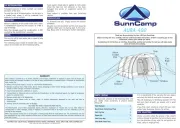
1 September 2025
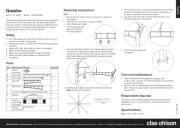
15 Juli 2025
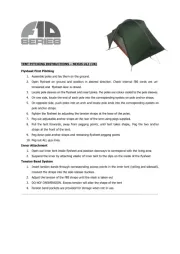
14 Juli 2025
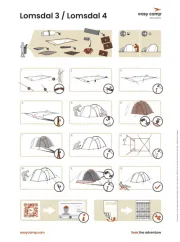
14 Juli 2025
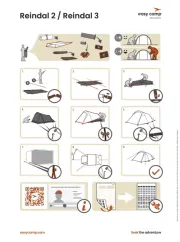
14 Juli 2025
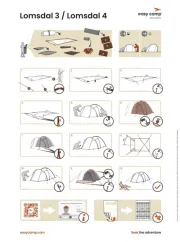
14 Juli 2025

6 Juli 2025
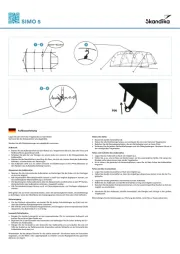
5 Juli 2025
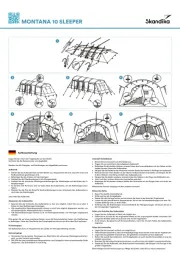
2 Juli 2025
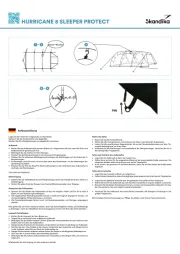
2 Juli 2025